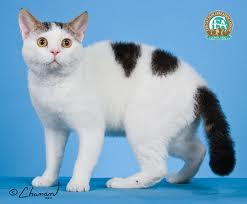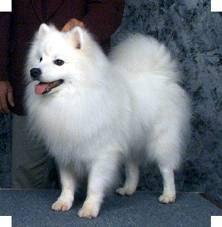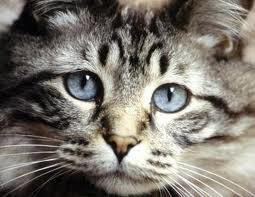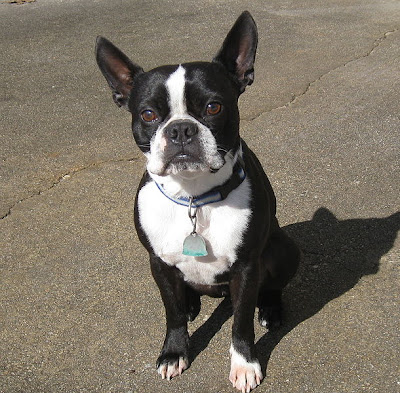This pregnant cat was dumped and rescued. My Billy is pictured inside the center in the litter.
Whether your female cat slipped out and the result is an "oops" litter, or even a pregnant cat presented herself (or was dumped) at your door, you may need aid with managing her pregnancy. This section covers the gamut of reproduction in cats, from the act of mating to helping using the birthing method and also support in finding permanent houses for the resultant kittens.
Like other cat advocates, I strongly urge that pet female cats be spayed as early as you possibly can, to get a quantity of causes covered in other articles (see the sidebar for hyperlinks). When a female cat reaches puberty, she becomes a queen, and estrus - in some cases spelled "oestrus" (heat) - cycles will start out. In domestic cats' heat cycles run commonly from January by way of August, according to place and climate.
Until she mates or is spayed, these estrus cycles will repeat as generally as each two or three weeks, causing distress to both the queen and her human companions. In the course of these cycles, Queenie's complete focus will probably be on escaping the house to mate, or to mate having a male companion, if you're careless enough to have entire male cats in the similar household. She will probably be single-minded in her really need to mate, will loudly vocalize (call), and lurk near doors, just waiting for the chance to meet up with one of the noisy feline Romeos who will cluster close to your home, fighting for the privilege of impregnating your queen.
When it is actually assumed that the majority of people have superior intentions about spay/neuter, often females mature earlier than anticipated, and the unwary caregiver will locate herself with a female in heat. Here are answers to some concerns you could possibly have on what happens for the duration of oestrus, or if she indeed finds a mate:
What Occurs In the course of Estrus?
Estrus is described as the period of receptivity to mating, and is linked with the production of estrodial (a kind of estrogen) produced by ovarian follicles. It is not to be confused with minstruation in human females, and you will hardly ever, if ever, see any indicators of blood, although occasional mucous discharge may possibly be evident.
Female cats are induced ovulators, which means that ovulation doesn't take spot with out mating or manual stimulation. If the female cat doesn't mate through estrus, hormonal levels will ultimately drop off, and also the estrus cycle will cease, until it repeats itself in another two to 3 weeks.
What Occurs During Mating?
The queen will signal her willingness to mate using a unique posture: head down, forelegs bent, rear quarters raised to expose the vulva ( this raised posture is called lordosis), together with the tail raised and held towards the side from the body, all created to accomodate entry by the tom cat's penis. Her rear legs will tread rhythmically, as if walking in spot.
The tom cat will mount the female from the rear, holding her on the back on the neck with his teeth. This biting behavior could in portion be to ensure cooperation, but may possibly also stimulate a component of your female's brain that induces ovulation.
Entire male cats have barbed penises (a lot like a fishhook), and upon withdrawal, the female cat will generally scream (whether from ecstasy or pain is questionable). It's also believed that the barbed penis stimulates ovulation. Actually, breeders sometimes use "Teaser Toms" to stimulate ovulation and finish the estrus cycle in queens which are not but prepared for breeding. Teaser Toms are neutered by vasectomy, leaving the barbs on the penis to stimulate ovulation.
How Soon After Mating Does Conception Occur?
Ovulation will usually happen within 20 to 50 hours after mating, and also the eggs are viable (capable of becoming fertilized) for around a single day. The eggs are fertilized in the oviduct, then make their method to the uterus through the uterine horn, implanting inside the uterine lining within 10 to 12 days.
Can a Litter Include Kittens from Numerous Sires?
Yes. On the street, a queen may mate with two or a lot more tom cats over the length with the estrus cycle - as much as 21 days, with an typical of seven days. Although genetics of your queen may perhaps come into play, multi-colored kitten litters will generally vividly demonstrate multiple mating. Some breeders of pedigreed cats hold the queen and chosen tom with each other for numerous matings to ensure that pregnancy will result.
Can my Cat Develop into Pregnant When Nursing?
Sadly, yes. For that reason, it's critical to help keep her indoors and separate from any complete mates within the property. The moment the mother cat begins to wean the kittens, she ought to be spayed to prevent further litters. In addition, the kittens need to be spayed/neutered, regardless of whether kept within the original household or placed for adoption.
At What Age Can a Cat Turn into Pregnant?
Even though female cats typically mature sexually anywhere from five to twelve months, it isn't uncommon to get a cat to begin the estrus cycle as early as 4 months. If she is allowed to turn out to be pregnant at this age, the result will literally be a case of a kitten birthing kittens, harmful to both the mother and the kittens. Numerous veterinarians are now practicing early spay and neuter to prevent tragedies of this sort.
If this report seems to be a thinly disguised spay and neuter message, it can be intentional. Spaying your female cat will not only help the overpopulation issue, but will make her a happier and healthier pet in the long-term.
How long is actually a cat pregnant for?
The gestation period for a cat is 63-65 days. This varies among cat even though, and anyplace in between 60 to 70 days is typical.
As opposed to humans, it's not doable to ascertain a pregnancy through a blood or urine test in cats. On the other hand, there are often indicators that your cat is pregnant, some signs involve;
By the third week of pregnancy the cat's nipples will develop into enlarged & pink. This is known as 'pinking up'.
By the fourth week of pregnancy she should have gained enough weight to make her pregnancy visible.
By 3-4 weeks your veterinarian should be able to palpitate the abdomen & feel the babies.
How long can be a cat pregnant for?
The gestation period to get a cat is 63-65 days. This varies amongst cat although, and anywhere among 60 to 70 days is typical.
In contrast to humans, it really is not probable to ascertain a pregnancy through a blood or urine test in cats. On the other hand, there are actually normally indicators that your cat is pregnant, some signs include things like;
By the third week of pregnancy the cat's nipples will come to be enlarged & pink. This is known as 'pinking up'.
By the fourth week of pregnancy she should have gained enough weight to make her pregnancy visible.
By 3-4 weeks your veterinarian should be able to palpitate the abdomen & feel the babies.
How does my veterinarian confirm pregnancy?
An experienced veterinarian will be able to palpitate the abdomen & feel the kittens around 17 - 25 days. Do NOT attempt to do this at home as you may cause miscarriage or damage to the developing kittens. After 32 days the developing fetuses & fetal membranes turn out to be difficult to distinguish.
The fetal bone structure can be seen on x-rays around the 43rd day. X-ray should be avoided in early pregnancy.
Pregnancy can also be detected by ultrasound. By around day 26 the fetus & heartbeats can be seen.
Morning sickness:
Just like humans, cats can experience morning sickness also & may go off their food around the third week of pregnancy.
Does a pregnant cat have any special requirements?
A good quality, nutritious diet is important. Your veterinarian may recommend a kitten food for your queen as this contains higher protein & calcium. Avoid supplementing the diet unless your veterinarian has given the go ahead to do so.
Over feeding & excessive weight gain should be avoided as this can complicate labour.
Keep her indoors for the last two weeks of pregnancy to ensure she doesn't give birth to the kittens elsewhere.
You should take your queen to the veterinarian early in pregnancy to get a health check, your veterinarian will also advise on the care of one's queen during pregnancy. He/she will probably want to see the queen again in late pregnancy.
Do I need any equipment for the cat's birth?
Kittening box. This can either be a sturdy cardboard box or a commercially available kittening box.
Sterile surgical gloves.
Eyedropper or syringe to aspirate the mouth & nose secretions.
Dental floss or cotton thread for ties.
Antiseptic to apply to the umbilical stumps.
Scissors.
Clean towels.
Your vet's phone number in an easy to reach place.
An emergency vet's phone number.
Kitten milk replacer.
The way to prepare for the birth:
During the last week of pregnancy, the kittening box should be placed in a warm, quiet, draft free room which is off limit to children & other pets. She should be encouraged to sleep in this box.
Obviously, food, water & a litter tray also need to be placed in this room.
The kittening box can be lined with old newspapers which can easily be changed or an old blanket. Make sure that the blanket isn't going to snag the kitten's claws. The bedding should be changed regularly.
How do I know when my cat is going into labour?
The mammary glands increase in size during the last week of gestation.
Around two days before the queen gives birth she will start producing milk.
She may start nesting.
Drop in temperature to around 99 F.
Her appetite may wane in the last day or two of pregnancy.
Change in behaviour. During the last week or so your queen may become either reclusive & seek out a secluded place or she may come to be more affectionate, especially if she is particularly bonded to one carer.
Danger signs:
Seek veterinary attention immediately if you notice the following signs;
If your queen stops eating for more than 24 hours
If she has an elevated temperature
If she becomes depressed or lethargic
If she has any unpleasant smelling discharge coming from the vagina
Can I give my cat medications while pregnant?
Some medications can cause birth defects & or abortion in pregnant cats so it's vital that you speak to your veterinarian before giving your cat any medications.
Can I worm my cat when she is pregnant?
No, worming should be avoided in pregnancy.
Can I flea my cat when she is pregnant?
I believe there are actually some flea products which are safe to use on pregnant cats. These are available from your veterinarian, so it truly is best to speak to him/her. DON'T ever use a flea product on a pregnant or nursing cat without the okay from your veterinarian.
Other things not to do:
Do not use human antiseptics and the like - such as Dettol etc as these can be poisonous to cats and also burn the skin. If you need to use any antiseptics, use one recommended by your veterinarian.
Do not handle the newborn kittens a lot in the first two days - minimal handling - let the mother bond with her babies. Cats have been known to kill and eat their babies if threatened by other animals or too much human interference.
Reminder - Female cats can again develop into pregnant within as little as 2 weeks after giving birth but more usually among 8 weeks and 10 weeks so great care that the queen is kept safely confined during this time.
If it is intended to get her de-sexed - around 7 weeks is usually a good time - she can still nurse her kittens afterwards.
Is this litter planned?
Breeding a cat is often a huge responsibility & should only be carried out by breeders with experience. In many cases everything will go along fine, but you will find risks involved to both the queen & the kittens.
If this is an unplanned pregnancy are you prepared for the unexpected? Some problems which may be encountered are:
Difficulty in birth, requiring an emergency c-section
Death of the mother
Death of the kittens
Mother rejecting the kittens, this will mean that the kittens will have to be hand raised for the first few weeks. Hand raising kittens is a rewarding but challenging job, which requires around the clock feeding for several weeks.
Have you found suitable homes for the kittens?
Are you prepared to keep hold of the kittens until they are at least 10 weeks old?
Remember that microchipping is mandatory in some states in Australia, and all kittens must be microchipped before they go to their new homes. So please remember to factor this into your budget.
Kittens will also need to be wormed & vaccinated prior to going to their new homes.
If both the male & female haven't been tested, there is often a possibility of contracting FIV & FeLV.
Please remember that there is often a huge problem with unwanted cats & the shelters are overflowing with cats desperately in need of a good home, so don't contribute to the over population of cats unless you are a registered breeder.






























